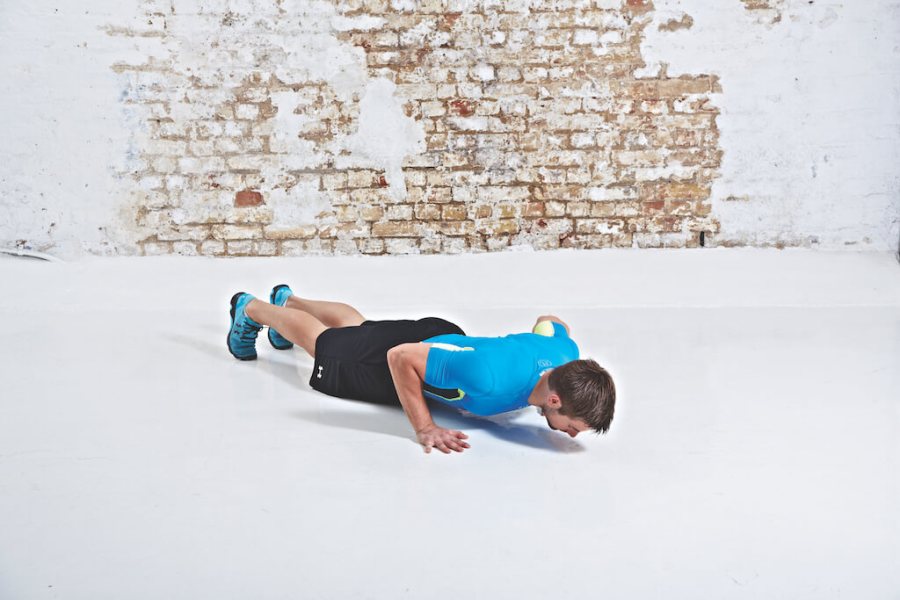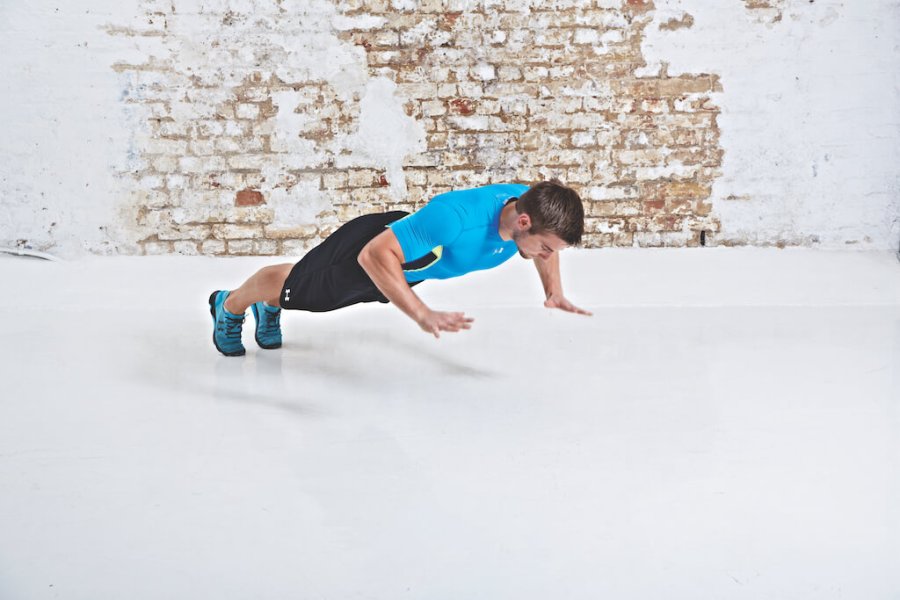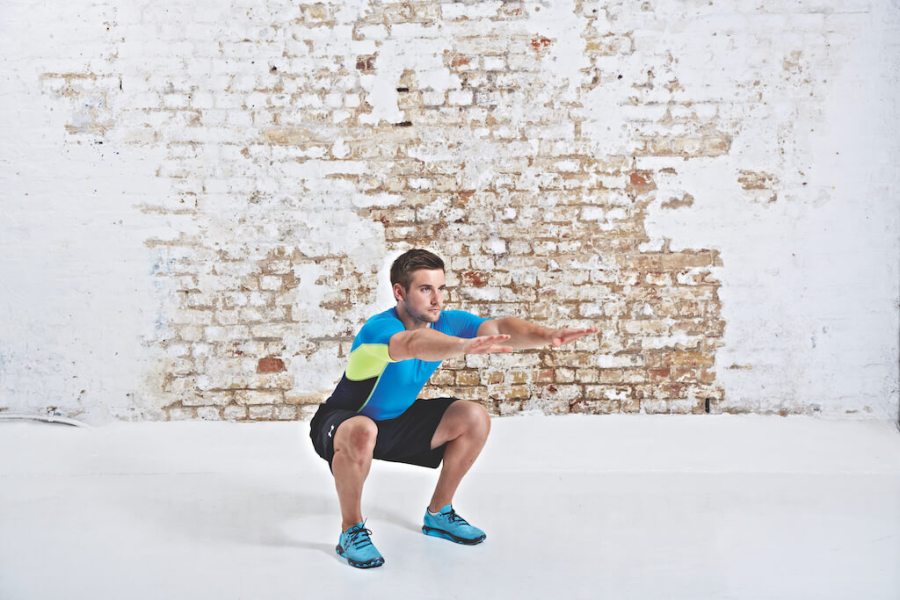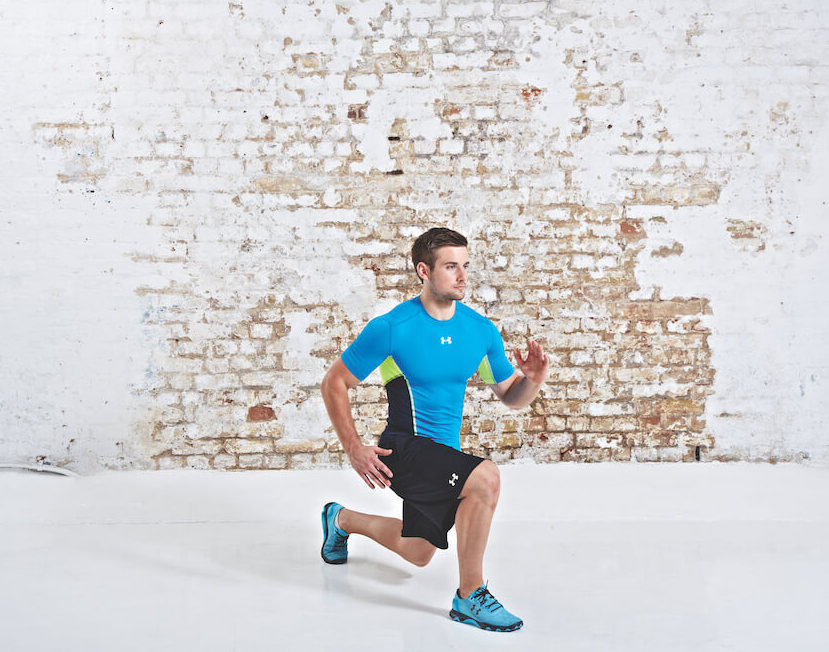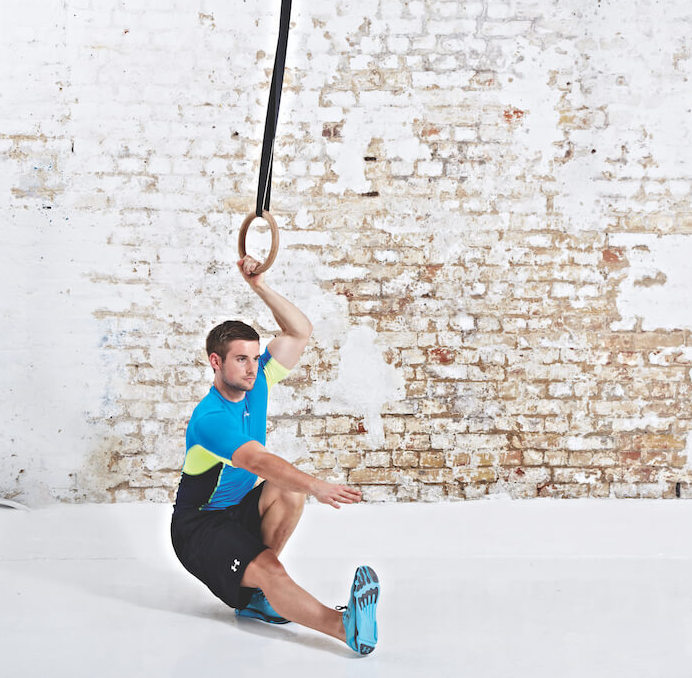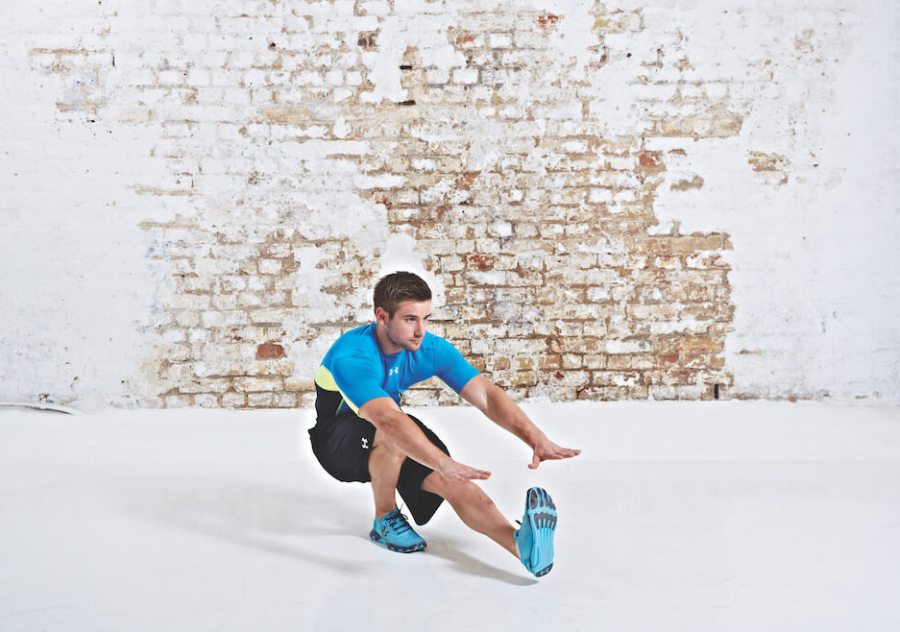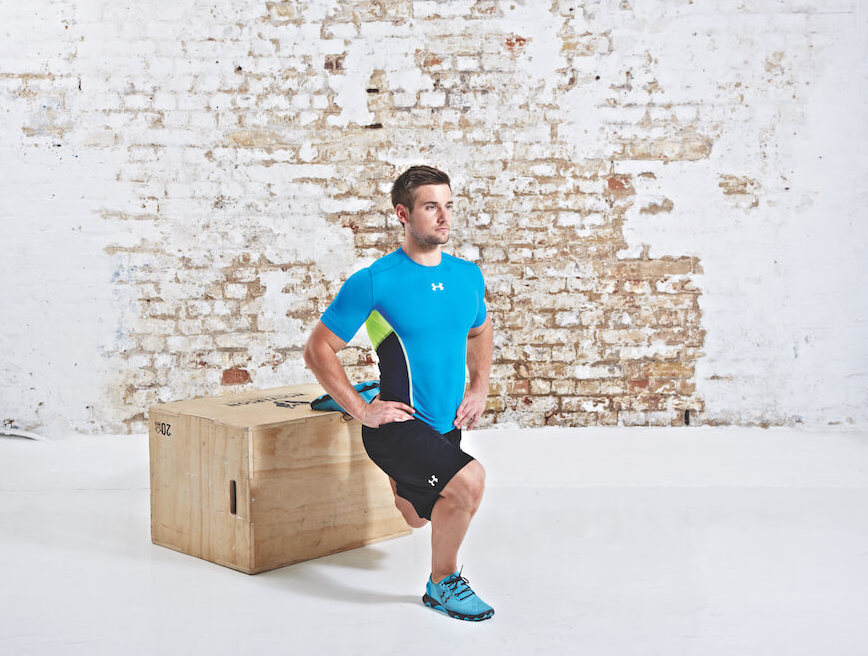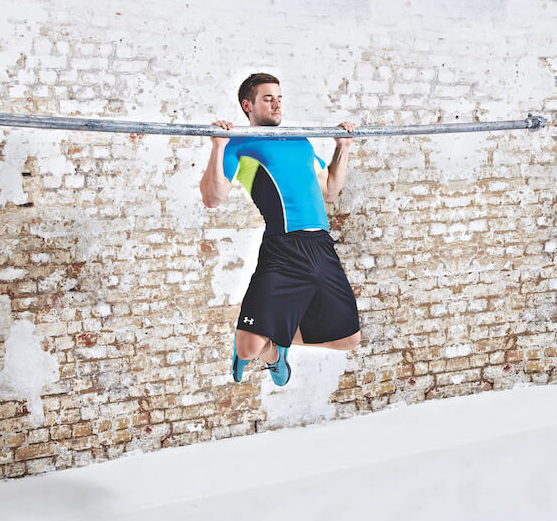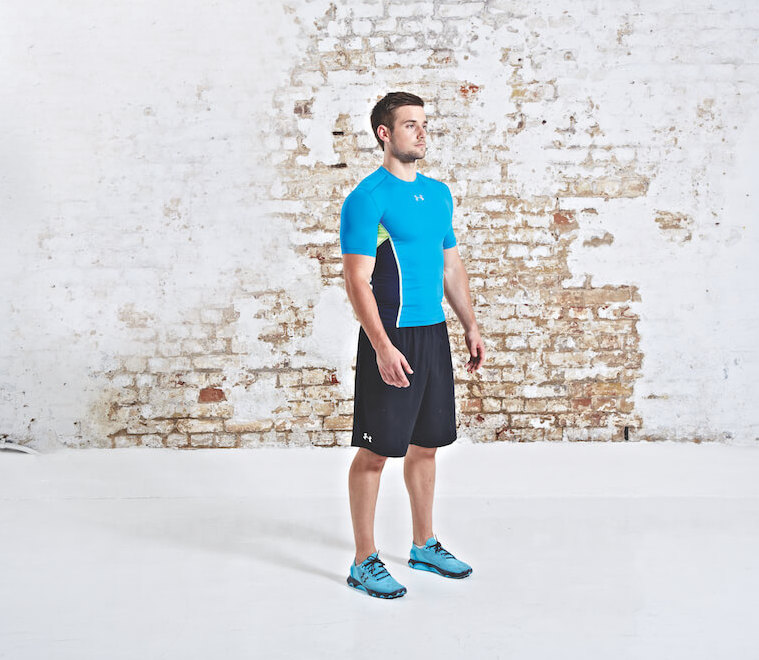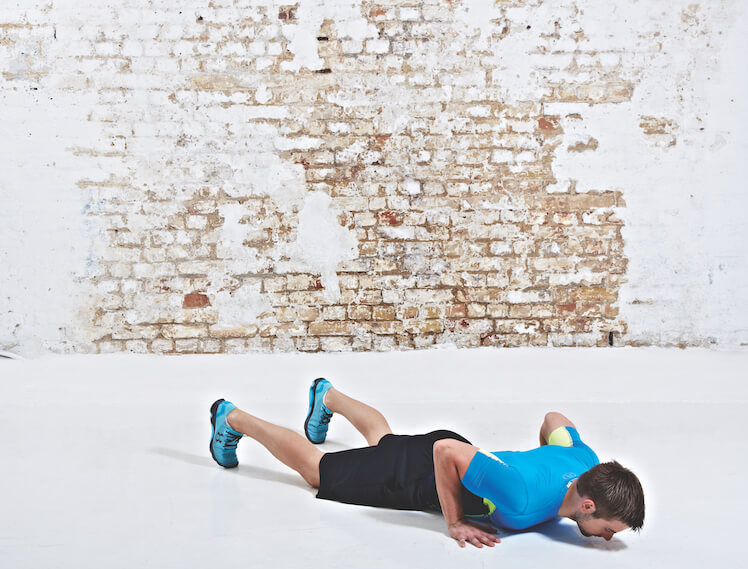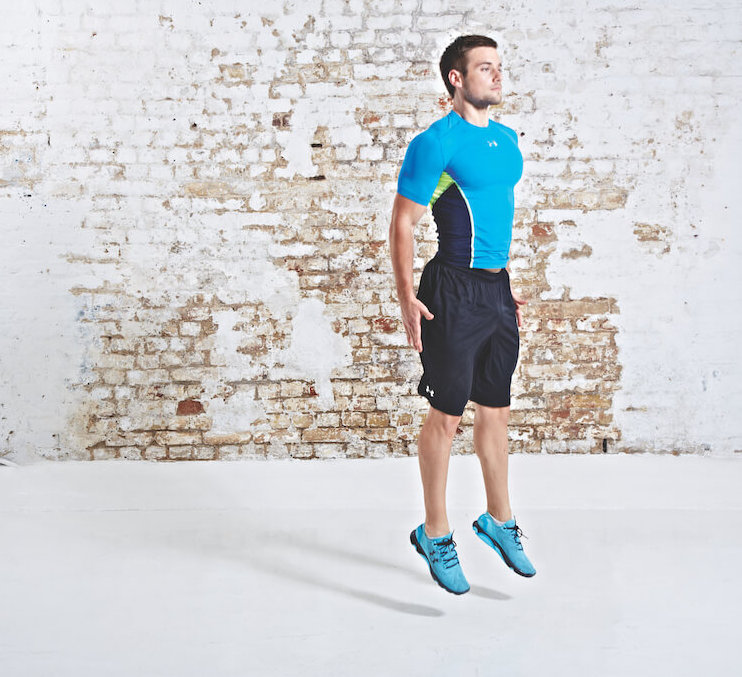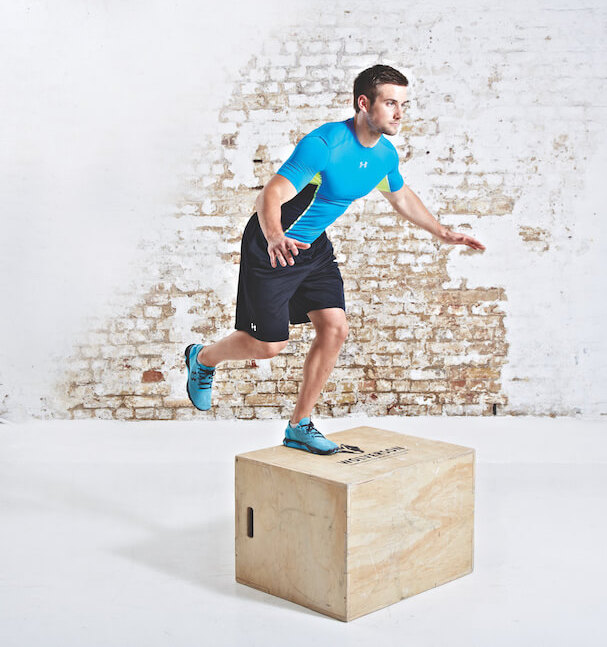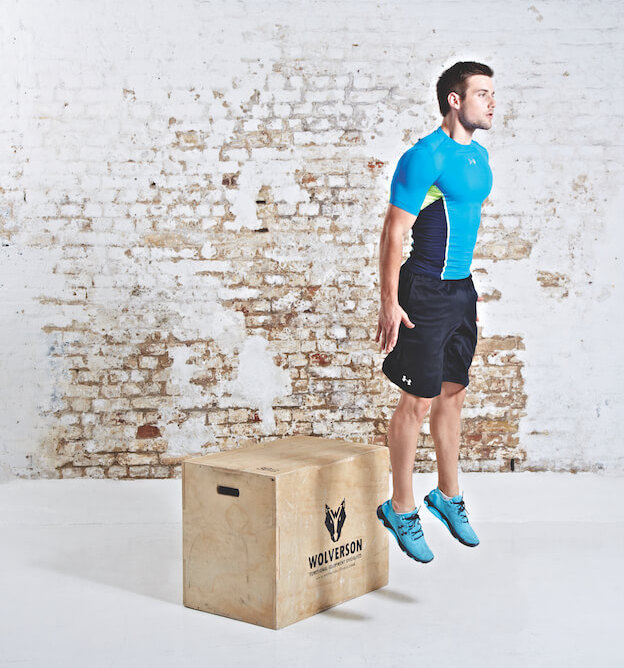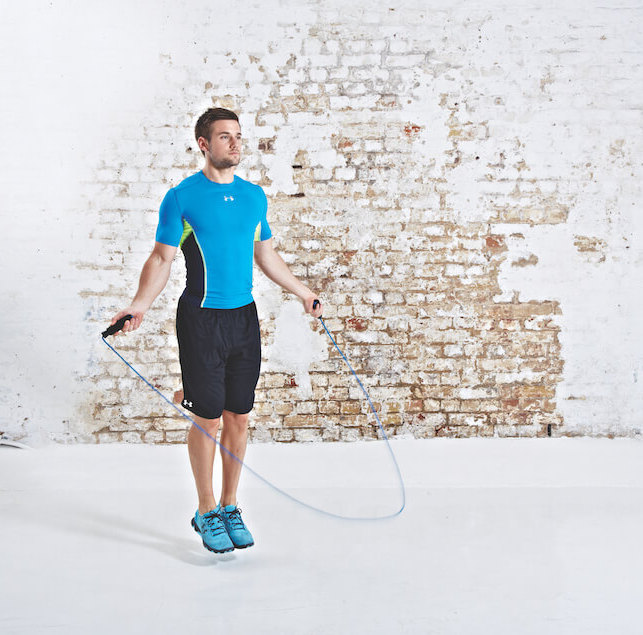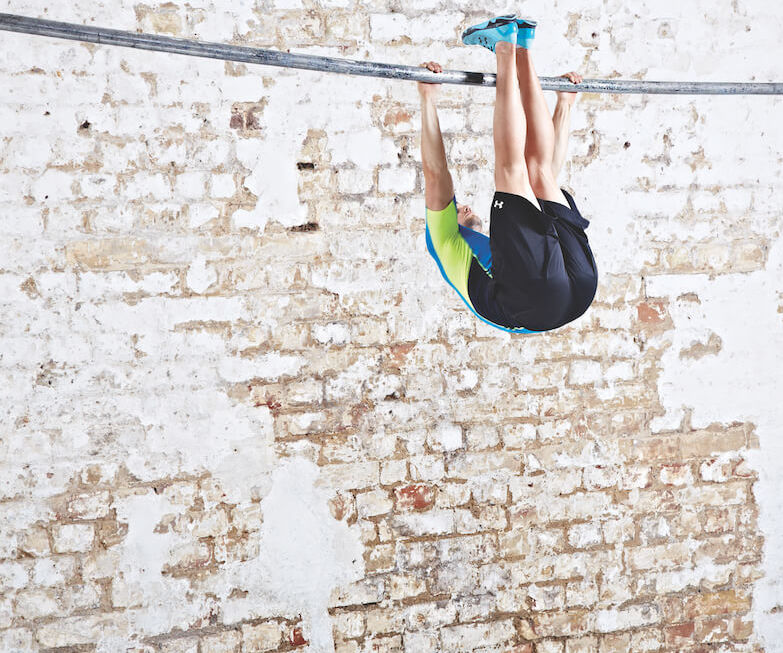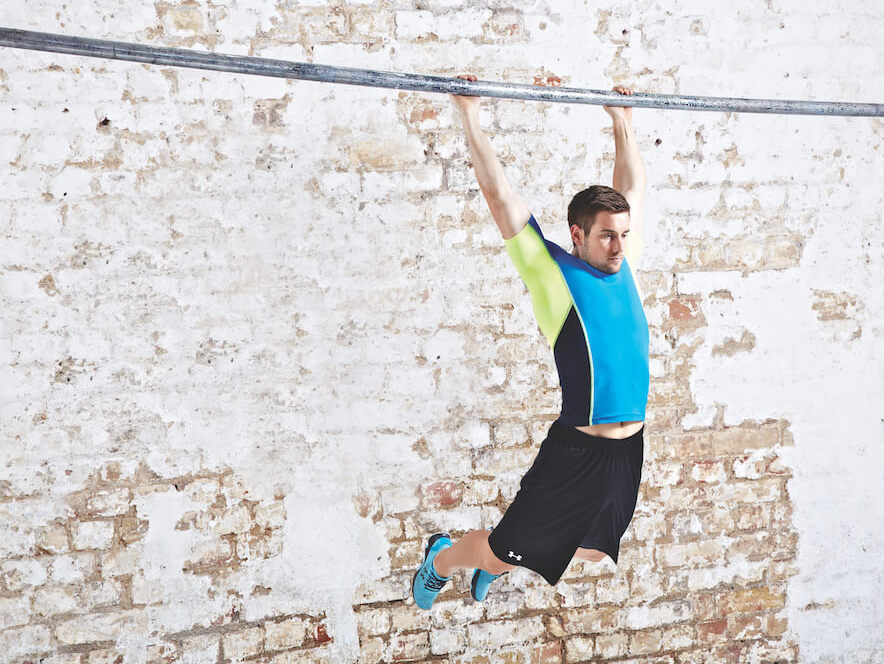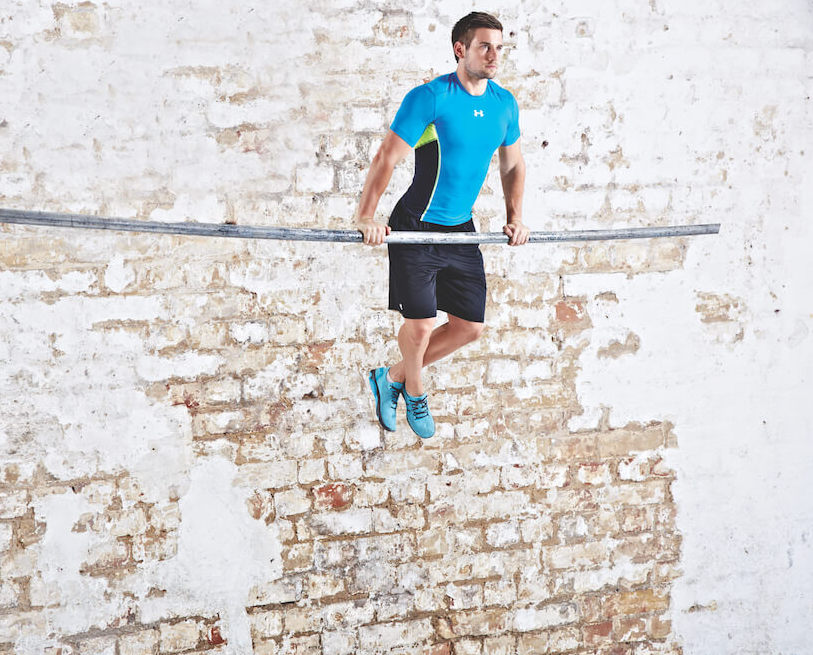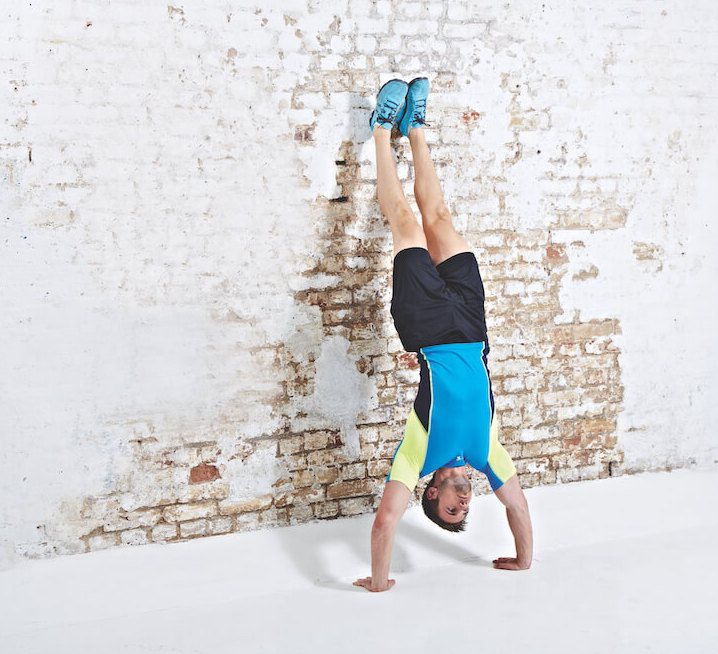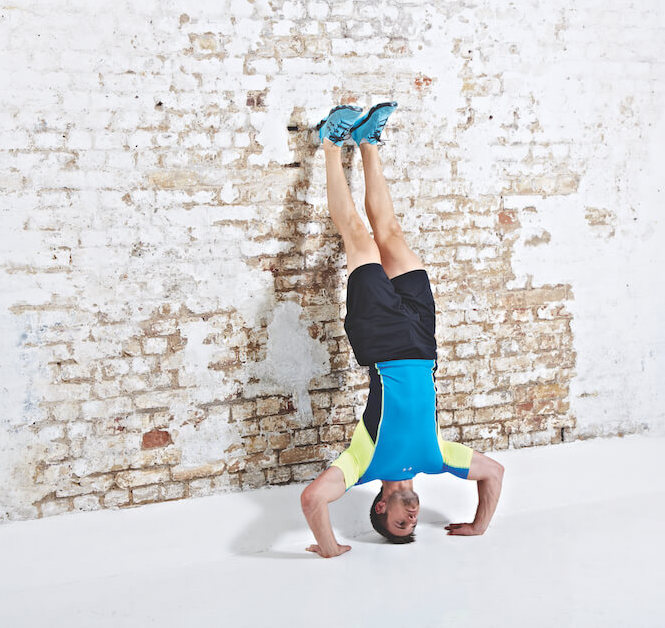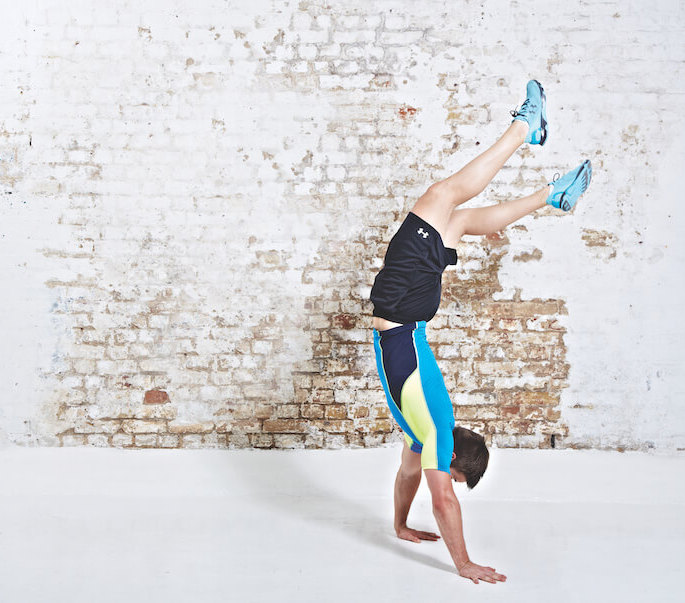Products You May Like
These are some of the best bodyweight exercises to build muscle and burn fat…
Lifting weights isn’t the only way to build strength and lose belly fat. You can get ripped with a selection of the best bodyweight exercises – and you can do them virtually anywhere.
Here’s how to do the essential bodyweight moves, with pro tips and the reason why each is so essential to helping you move better, get stronger and be as functionally fit as possible.
Related content:
Best bodyweight exercises
Press-Up
“The basic bodyweight move everyone knows should be an essential part of your exercise arsenal,” says Andy McKenzie, also known as ‘Ironmac’ – one of Britain’s top strength and conditioning coaches.
“Done correctly, the press-up will build your chest and shoulders, while strengthening your core.”
How to do a press-up:
- Start with your hands shoulder-width apart, thumbs underneath your shoulders and body straight from head to heels.
- Tighten your abs, then your glutes to create tension in your core.
- Lower yourself until your elbows reach 90°, pause, and then explosively press back up.
Pro tip: “Keep your core tensed but relax your shoulders,” says McKenzie. “It will work your abs more, reduce shoulder fatigue and make explosive reps easier.”
Explosive Press-Up
“The split-second strength required to lift yourself off the ground builds your explosive power and turns the press-up into a move that also builds cardio endurance,” says McKenzie.
How to do an explosive press-up:
- Start in a normal press-up position.
- Lower yourself until your elbows reach 90°, pause, then press back up with enough force to bring your hands off the floor.
- Keeping your body in a straight line and thumbs under your shoulders, land with your hands in the starting position and lower yourself under control.
Pro tip: “To build endurance and develop the fast-twitch muscle fibres needed for the explosive movement, do ten seconds of explosive press-ups with 45 seconds’ rest for as long as you can.”
Air Squat
“Deep bending of the knees is vital for good mobility. It’s intrinsic to many real-life movements and should be done on a daily basis,” says McKenzie. “Think of it as flossing for the lower body.”
How to do an air squat:
- Stand with your feet slightly more than shoulder-width apart, with your weight spread equally between them.
- Hold your arms straight out in front of you for balance.
- Squat, concentrating on keeping your hips back, your chest out and your eyes looking straight ahead.
- Keep going until your hip crease is just lower than your knees, pause, then stand to return to the start.
Pro tip: “Use ‘triangle feet’ to distribute the load,” says McKenzie. “Ensure your big toe, little toe and heel are all in contact with the floor, sharing the pressure evenly between them.”
Lunge
“An effective exercise in itself, the lunge also complements other leg moves to maximise gains in leg strength,” says McKenzie. “It will also improve the flexibility and movement range of your hip flexors to help keep you injury free.”
How to do a lunge:
- From a standing start, lunge forwards twice the distance of a normal step, or until the heel of your rear foot leaves the floor.
- Keep your core tight as you lower under control and try to avoid your rear knee touching the floor.
- Bring the opposite arm up to maintain balance. Squeeze your quads and glutes on the leading leg as you return to standing.
Pro tip: “If you want to work your glutes even harder and get true buns of steel, do a reverse lunge afterwards by lunging backwards instead of forwards. Focus on dropping your hips back and keeping your weight on the heel of your front leg.”
Box Pistol Squat
“Making an exercise easier while maintaining the movement pattern is key to progression,” says McKenzie. “Using a box to balance on when you reach the bottom position is a great way to learn how to lower your body under control. Once you’ve got that mastered, take the box away and focus on maintaining balance at the bottom, too.”
How to do a box pistol squat:
- Find a box that’s as low as you can comfortably go. Stand 15cm in front of it in the starting position for the pistol.
- Lower yourself as slowly as you can to build your balance as much as possible and avoid reaching for the box.
- When you reach the box, let it take some of your weight and hold the position for a few seconds.
- Drive through the heel of your supporting leg to return to standing, keeping your leading leg extended.
Pro tip: “Once you’re comfortable, allow a gap between your bum and the box big enough to slide an envelope through,” says McKenzie. “Once you can do that, start using a slightly lower box. Rinse and repeat.”
Supported Pistol Squat
“While the box pistol helps you work on balance, this variation develops the strength and range of motion needed to do a pistol correctly,” says McKenzie.
How to do a supported pistol squat:
- Stand in the starting position for the pistol holding a gymnastic ring or suspension trainer handle in the hand opposite your leading leg. Keep the grip light to avoid leaning back too much.
- Perform a pistol squat, slowing the move down as much as possible and using the ring for support as little as you can.
- Hold the bottom position for a few seconds before driving through your supporting heel to stand.
- Keep your leading leg as straight as possible.
Pro tip: “Switching legs in the bottom position and holding each for a few seconds is a great way to work on mobility and the strength needed to support the body with only one leg,” says McKenzie.
Pistol Squat
“There’s no cheating with form on this one and it requires perseverance to get it right, but the benefits make it well worth the effort.”
How to do a pistol squat:
- Stand with one foot off the ground in front of you with your toes pointing to the ceiling. Stretch your arms out.
- Keep your upper body leaning forwards and use your hands as a counterbalance as you slowly lower yourself, keeping your leg outstretched throughout.
- Aim for your stomach to come in contact with your upper thigh.
- Control the descent until the hamstring of your supporting leg rests on top of the calf.
- Rise slowly while keeping tension in your legs.
Pro tip: “Push the heel of your leading foot out as you start to come up from the bottom position,” says McKenzie. “It will help you to maintain balance and good form.”
Bulgarian Split Squat
“We spend a lifetime moving from one foot to the other,” says McKenzie. “It makes perfect sense to ensure that left equals right in terms of control, strength and balance. The Bulgarian split squat is the perfect tool for training all three aspects.”
How to do a Bulgarian split squat:
- Stand facing away from a knee-high box or bar and rest one foot on it.
- Lower your body until your hips are in line with the box or bar.
- Maintain a straight line from your hips to your head. Puffing your chest out and looking straight ahead will help.
- Drive through the heel of your supporting foot to return to standing.
Pro tip: “Relax your back leg as much as possible,” says McKenzie. “This move is supposed to build single-leg strength and tensing your back leg will only make the motion more difficult.”
Pull-Up
“The pull-up is one of the most challenging bodyweight moves,” says McKenzie. “If someone tells you bodyweight exercises aren’t strength training, ask them to do ten clean reps and watch the smirk dissolve from their face.”
How to do a pull-up:
- Hold the bar with your hands in line with your shoulders.
- Bring your chest towards the bar by forcing your elbows down while holding the bar so tight it’s as if you want to crush it. Maintain tension in your core and glutes throughout the move, and keep your legs crossed behind you to avoid the temptation to swing and use momentum to cheat.
- Once your chin is over the bar, slowly lower yourself back to the start.
Pro tip: “Always start from a dead hang with your arms locked out,” says McKenzie. “There’s no point in cheating. If you’re really struggling to get through a set, jump to the top position and slowly lower yourself rather than quitting entirely.”
Burpee
“Like the press-up, this move can be done absolutely anywhere,” says McKenzie. “Unlike the press-up, it’s a total-body move that builds killer cardio endurance and is one of the best fat-burning exercises.”
How to do a burpee:
- From a standing start, lower into a deep squat and place your hands on the floor.
- Force both legs back, putting you in a press-up position.
- Lower your body until your chest and hips touch the floor at the same time to keep your body in line.
- Drive up through your hips, jumping your feet back in towards your hands.
- Stand up and jump just high enough for your feet to leave the floor.
Pro tip: “Each time you shoot your legs back, you must keep your gut and butt tight to reduce the force going through the lumbar spine,” says McKenzie.
Box Jump
“This is a brilliant way to build the kind of lower-body explosiveness that has all sorts of practical applications, from sprinting to Olympic weightlifting,” says McKenzie.
How to do a box jump:
- Stand in front of a box with your feet hip-width apart and a slight bend in your knees.
- Spring up through the balls of your feet, push your hips forwards and drive your arms upwards.
- Land softly by distributing your weight through your ankles, knees and hips before standing up and dropping back down.
Pro tip: “Choose a box height you are confident you can make at first,” says McKenzie. “If you want up the stakes, use a soft box so you don’t bash your shins. You’ll usually find you can jump higher with soft boxes too because any shred of fear is eliminated.”
Single-Leg Box Jump
“Developing single-leg power is one of the best ways to transfer what you do in the gym to sports such as football or any running-based activity,” says McKenzie.
How to do a single-leg box jump:
- Choose a box lower than one you would use for a box jump.
- Stand on one leg in front of the box and swing your raised leg out behind you.
- As you swing it forwards, keep your chin and chest up and explode on to the box using your back leg’s momentum.
- Hold your landing position for a few seconds before stepping back down.
Pro tip: “If you’re finding balance an issue, make sure you keep your eyes focused on one spot ahead of you the whole time,” says McKenzie. “It works like a charm.”
Depth Jump
“This was developed by the Russian military. The shock created by the landing engages your muscles more than just jumping off flat ground to help build better explosive strength,” says McKenzie.
How to do a depth jump:
- Stand on a box with your toes hanging over the edge. Step off (don’t jump – the momentum will shift your body forwards) and drop straight down.
- Bend at the knees to absorb the impact and launch straight into a vertical jump using the force created by your landing.
Pro tip: “Keep your core tight and hold your breath as you land, even more so during take off,” says McKenzie. “Timing is also key – make sure the landing and upwards spring are all one motion.”
Skipping
“Skipping isn’t just for playing double Dutch,” says McKenzie. “It improves mental focus as well as coordination, lower-limb strength, cardio fitness and timing.”
How to skip:
- Start with the rope behind your heels and keep your elbows as close to your sides as you possible to help maintain the length of the rope as you skip.
- Movement comes from the wrist, not the whole arm.
- As the rope moves overhead, time your jump. You only need to clear the floor by a few centimetres.
Pro tip: “Relax and you’ll find a rhythm. Tense up and you’ll probably end up whipping your feet,” says McKenzie. “If you’re finding it tough at first, swing the rope to one side so you can get the rhythm down.”
Ring Dip
“The dip is like a squat for your upper body because it engages so many different muscles,” says David Jackson, a UK Strength & Conditioning Association accredited coach.”Doing it on rings gives the stabiliser muscles in your shoulders an extra workout, which can help with some of your lifts.”
How to do a ring dip:
- Adjust the rings so they’re just above hip height and grip them with your knuckles facing away from your body.
- Jump up and straighten your arms to support your weight, taking care to keep the rings close to your body.
- Lower yourself to below parallel or as low as your shoulders will allow.
- Pause briefly before extending powerfully to go back up to the start.
Pro tip: “Go as low as you can at first, but as your strength develops concentrate on increasing you range of motion,” says Jackson. “It’ll help massively if you want to move on to more advanced moves such as human flags.”
Toes to Bar
“Hanging exercises help to injury-proof your shoulders because gripping a bar engages the shoulder stabilisers,” says Jackson. “Toes to bar can also help to build a solid six-pack as it places a lot of pressure on your lower abdominals.”
How to do toes to bar:
- Hang from a bar with an overhand grip. Lean back slightly and draw your shoulder blades together while lifting your legs towards the bar.
- Straighten your legs to touch the bar with your toes.
- Lower with control back to a hanging position.
Pro tip: “Always lower with control to maximise the strength development of the core,” says Jackson. “To create adaptation we need tension, so being lazy and just letting your legs fall won’t help you to get the most from this exercise.”
Muscle-Up
“You can also do this on the rings. The straight bar muscle-up removes the instability rings provide, but that doesn’t make it easier,” says Jackson. “In fact it’s harder because you have to pull yourself up and around the bar to get above it.”
How to do a muscle-up:
- Jump up and grab the bar with an overhand grip around shoulder-width apart.
- Allow your body to swing forwards and backwards very gently.
- At the end of a forwards swing, just as you’re beginning to swing back, pull yourself up as aggressively as possible. The slight swing combined with the pull will give you the correct angle for going around the bar.
- Pull your chest towards the bar. At the peak of the pull-up, lean forwards and try to catch yourself in the bottom of a dip. Push up until your arms are fully extended.
- Reverse the actions to return to the start.
Pro tip: “Timing is crucial,” says Jackson. “Practise with your feet in a resistance band tied to the bar to take some of the load. This will help you train the mechanics and timing of the movement.”
Related: How To Use Resistance Bands
Handstand Press-Up
“This is a great way to develop shoulder strength and stability,” says Jackson. “And if you develop the balance to do it without a wall, you’ll look also like a total legend.”
How to do a handstand press-up:
- Place your hands about 30cm from a wall and kick your legs over your head and rest them against it.
- If you’re struggling, lead with one leg and progressively kick harder until you feel the wall, then bring your other foot up to meet it.
- Brace your core and lower your head towards the floor. Take a progressive approach with this and only go as far as you feel you can control.
- As you get stronger, you’ll be able to move your head closer to the ground.
- At the bottom of the press-up, tense your core again and push down hard, straightening your elbows until you’ve returned to the start.
Pro tip: “Once you feel confident, try to rest as little weight as possible on the wall through your legs,” says Jackson. “It’s too easy to think you’re doing a decent rep when really you’re just cheating your way through it.”
Handstand Walk
“This is a good move for developing strength and stability in your shoulders while enhancing the coordination of your shoulder joints with the rest of your body,” says Jackson. “It’s also useful if your legs ever get too tired to walk!”
How to do a handstand walk:
- Place both hands on the ground with your index fingers facing forwards. Spread your fingers to give you a wider base.
- Kick up powerfully with one leg and allow the other to follow, aligning your wrists, elbows and shoulders.
- Practise on a soft, stable surface first so you can roll out of the handstand safely if necessary.
- Let your knees bend a little to take more weight past your head and tip you in the direction you want to go.
- Walk with your hands using small, light ‘steps’.
Pro tip: “Dangling your legs forwards is the equivalent of an accelerator,” says Jackson. “Have a friend on standby to catch and reset your legs if you get overeager.”
RELATED CONTENT:
- Bodyweight supersets workout for functional strength and fat loss
- Build muscle at home with this bodyweight workout
- Kettlebell HIIT workout: fat burning 40/20 circuit
